
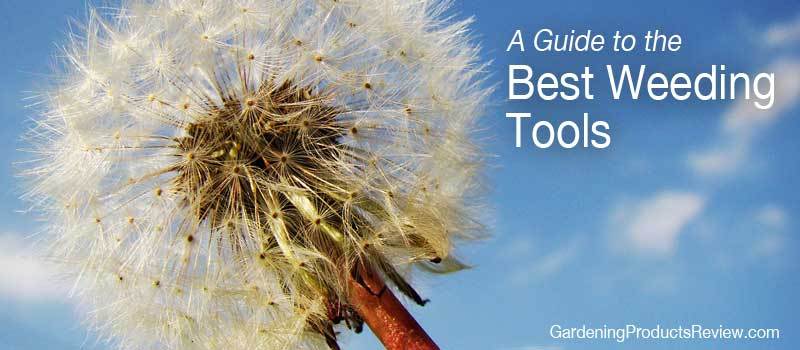
Weeding is probably one of the most disliked gardening tasks, usually because it’s hard work and the job never seems to be finished (remove one weed and two more will spring up in its place!).
So what’s the best way to remove weeds from your lawn and garden?
There’s no simple answer; the best method and/or tool depends on a number of factors –
- you (for example, your hand strength and dexterity, ability to kneel and reach)
- the type and number of weeds (such as weeds with long taproots, large rootballs, runners or stolons, size, woody versus soft, annual versus perennial)
- conditions (soil type and moisture level, where the weeds are e.g., garden bed, between patio pavers, climbing up a tree), and
- preferences (for example, organic vs mechanical vs chemical).
Reasons to Weed
Whether you’re a laissez-faire gardener like me or one who likes everything to look perfect, you’ll still need to weed your garden from time to time. Here’s why.
- Weeding keeps your garden beds tidy and, more importantly, keeps your plants healthy.
- Weeds inhibit plant growth by competing for moisture and nutrients in the soil. If you don’t weed, your “real” plants may decline or be overrun.
- Weeds can ruin the look of your carefully-planned garden. Think of yellow dandelions instead of the blue salvia you were expecting to see…
- Some weeds are poisonous or cause skin irritation (e.g., poison ivy, giant hogweed).
- Invasive plants can get out of control.
- Once established, weeds are hard to remove without damaging your plants.
How to Prevent Weeds
Although there’s no way to “weed proof” your garden, there are a number of ways to reduce the number and vigor of weeds. Some of the most common methods include:
- Intensive cropping / planting densely
- Covering the soil with mulch (including organic mulches, such as shredded bark, pine straw, or compost, and inorganic materials, such as gravel, rubber mulch) or a weed-suppressing layer (fabric, plastic)
- Spreading a chemical weed suppressant on the soil surface
- Deadheading or removing all weeds before they go to seed
Still, no matter how diligent you are in trying to prevent weeds, there will always be the ones that “got away” – and you’ll have to find some way to remove those weeds.
Types of Weeding Tools
While hand pulling is the simplest method, it’s only effective against smaller weeds with shorter roots. It also assumes that you’re able to spend extended periods of time on your knees, reaching for and pulling weeds. For anything else, you’ll need a weeding tool of some kind.
Two Types of Weeding Tools
There are two basic styles of weeding tools – short handled and long handled. Short-handled tools are best for working on your knees in tight or closely planted areas. Long-handled tools allow you to stand while weeding and cover a larger area.
Within these two basic styles, you’ll find a huge variety of designs. Manufacturers have come up with all sorts of tools to remove weeds. Some work very well, others are mostly gimmicks.
No tool is perfect for all weeding tasks so you’ll likely end up with several different types of tools. The key is to find the ones that best allow you to do the kind of weeding that’s necessary for your garden or lawn.
Here’s what you need to know to choose the best weeding tool for your needs.
What to Look for When Buying Weeding Tools
When considering a new weeding tool, ask yourself the following questions:
- Does this tool allow me to work in a comfortable position? Can I hold it easily? Do I have the strength and/or dexterity to use it properly?
- Can it pull out the entire root? How about for weeds with longer or deeper roots (as deep as 6 to 12 inches or greater)? This is especially important for taprooted weeds – miss even a little piece of root and the weed will spring back quickly.
- Will it work for the most common and/or troublesome weeds in my garden? For example, if you have a lot of running grasses, can it pull out the roots without breaking them into little pieces? If dandelions are your problem, can it pull taproots?
- Is this weeding tool made with high quality materials, such as a hickory handle or stainless steel blade? Are the parts held together securely? And does it have a warranty?
- Are the cutting or digging edges sharp? Can they be resharpened if needed?
- What kind of maintenance does this tool require? Does it need frequent cleaning, lubricating, or sharpening? Am I prepared to do that?
- What else can this tool help me with? And if I get this weeding tool, what other tools will I also need to be able to do all the necessary weeding tasks in my garden?
- Given all of the above, is this really a tool that I’ll use? Will it make weeding easier, or will it just complicate things?
Only you can answer these questions and the answers will be different for everyone. With so many weeding tools to choose from, use your answers to help guide your buying decisions. Don’t be sucked in by slick marketing material and TV ads – just because a tool (seems to) work for someone else doesn’t mean that it’s the right tool for you.
Short-Handled Weeding Tools
Short-handle weeders are more than just a smaller version of long-handled weeding tools. Although some do look like miniature hoes, there is also a wide range of unique styles only found with short handles. The goal is to give you good control of where you make your weeding strikes (so you don’t accidentally uproot your prized perennials) with enough power to make the job as easy as possible.
Depending on your needs, one or more of these short-handled weeders may be just what you’re looking for.
Hori Hori or Japanese Farmer’s Knife
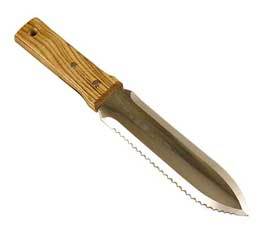 This versatile tool looks like a knife on steroids. The 7-inch blade has one smooth edge for slicing (like when opening a bag of mulch) and one serrated edge for use in stabbing and sawing through roots, sod, and other tough material. It can be used for cultivating, digging, cutting, and prying weeds out of the ground. It’s usually available with either a stainless steel or carbon steel blade. While the carbon steel holds a sharper edge, it needs more frequent sharpening and rusts quickly. You can usually find if for around $25.
This versatile tool looks like a knife on steroids. The 7-inch blade has one smooth edge for slicing (like when opening a bag of mulch) and one serrated edge for use in stabbing and sawing through roots, sod, and other tough material. It can be used for cultivating, digging, cutting, and prying weeds out of the ground. It’s usually available with either a stainless steel or carbon steel blade. While the carbon steel holds a sharper edge, it needs more frequent sharpening and rusts quickly. You can usually find if for around $25.
Lesche Digging Knife
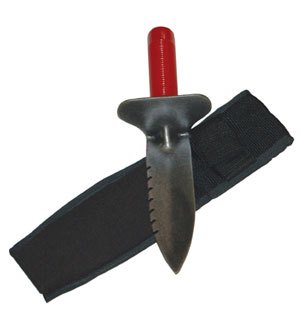 This is a beefed up version of the traditional hori hori. It has a comfortable and sturdy handle, both a serrated and straight edge on the digging blade, a blade guard to protect your hand as you plunge the tool into the soil, and a heat-treated blade that’s strong enough to give you the flexibility to do more than just weed. I’ve used it to easily slice through roots when weeding, cut through sod (I’ve even used it to edge a flower bed), dig trenches, weed between bricks or pavers, cut twine or plant ties, and so much more. It even comes in both right and left handed versions. Made in the USA. Around $36.
This is a beefed up version of the traditional hori hori. It has a comfortable and sturdy handle, both a serrated and straight edge on the digging blade, a blade guard to protect your hand as you plunge the tool into the soil, and a heat-treated blade that’s strong enough to give you the flexibility to do more than just weed. I’ve used it to easily slice through roots when weeding, cut through sod (I’ve even used it to edge a flower bed), dig trenches, weed between bricks or pavers, cut twine or plant ties, and so much more. It even comes in both right and left handed versions. Made in the USA. Around $36.
>> READ OUR FULL REVIEW
Asparagus Knife or Fishtail Weeder
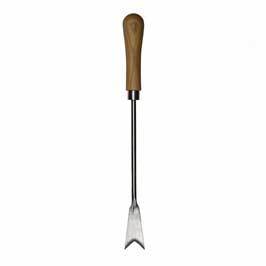 You’ve probably seen many of these before – it’s the tool commonly used to pry up dandelions. While I tend to use my hori hori or Lesche knife to dig up taprooted weeds in the flower or vegetable beds, there’s nothing like a fishtail weeder for getting dandelions out of lawn or groundcover. It has a long, narrow shaft with a V-shaped tip. Just plunge it into the ground beside the dandelion with the V facing the plant, pull back slightly on the handle, and voila – the dandelion will pop out easily. This isn’t a “sexy” tool, but it’s a must-have. And if you want to go “upscale” there’s a version with a fulcrum that could make it even easier to pop weeds out of hard ground. You’ll find a wide range of prices on dandelion weeders, from about $5 all the way to $40. There are also ergonomic versions (mostly with larger handles) for those with dexterity or grip strength issues.
You’ve probably seen many of these before – it’s the tool commonly used to pry up dandelions. While I tend to use my hori hori or Lesche knife to dig up taprooted weeds in the flower or vegetable beds, there’s nothing like a fishtail weeder for getting dandelions out of lawn or groundcover. It has a long, narrow shaft with a V-shaped tip. Just plunge it into the ground beside the dandelion with the V facing the plant, pull back slightly on the handle, and voila – the dandelion will pop out easily. This isn’t a “sexy” tool, but it’s a must-have. And if you want to go “upscale” there’s a version with a fulcrum that could make it even easier to pop weeds out of hard ground. You’ll find a wide range of prices on dandelion weeders, from about $5 all the way to $40. There are also ergonomic versions (mostly with larger handles) for those with dexterity or grip strength issues.
Cape Cod Weeder
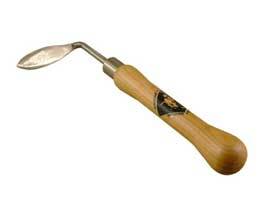 This is a strange-looking tool but it comes in handy when working in tight spaces. The L-shaped blade is drawn toward you right under the soil surface, cutting off weeds at the root. It’s short enough to let you easily reach between plants and is easy to hold. Make sure you get the right one though – it comes in both a right- and a left-handed version. Depending on the brand, prices range from $20 to $50.
This is a strange-looking tool but it comes in handy when working in tight spaces. The L-shaped blade is drawn toward you right under the soil surface, cutting off weeds at the root. It’s short enough to let you easily reach between plants and is easy to hold. Make sure you get the right one though – it comes in both a right- and a left-handed version. Depending on the brand, prices range from $20 to $50.
Hoe Dag
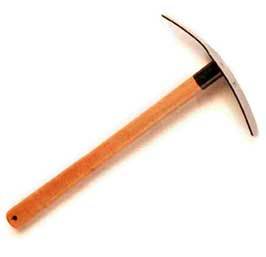 Yes, the hoe dag. I’m not sure what the name means, but the tool itself means business! With a beech handle and a heat-treated carbon blade that looks a bit like a miniature pick axe, the hoe dag is an extremely versatile tool that I use for weeding, digging, planting, cultivating, removing clumps of grass, and more. Use the larger end of the blade for digging and planting, and the smaller end for more controlled actions, like weeding. It’s easier on the wrist than many weeding tools because it doesn’t require you to twist or bend your wrist – just bury the head in the ground and pull it toward you. Made in the USA. Retails for $29.99.
Yes, the hoe dag. I’m not sure what the name means, but the tool itself means business! With a beech handle and a heat-treated carbon blade that looks a bit like a miniature pick axe, the hoe dag is an extremely versatile tool that I use for weeding, digging, planting, cultivating, removing clumps of grass, and more. Use the larger end of the blade for digging and planting, and the smaller end for more controlled actions, like weeding. It’s easier on the wrist than many weeding tools because it doesn’t require you to twist or bend your wrist – just bury the head in the ground and pull it toward you. Made in the USA. Retails for $29.99.
Dee Weeder
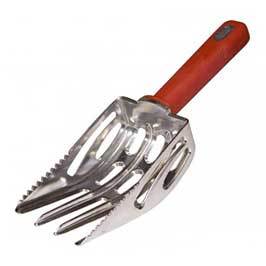 Don’t be put off by the Dee Weeder’s ugly duckling looks. Its large, square, perforated scoop and sawtooth edges may look funny, but after you’ve used it a few times, you’ll find yourself reaching for it before any of your other hand tools. The sharp, saw-tooth edges make quick work of weeding in tight spaces, edging, planting, and mulching. Made of cast aluminum with a non-slip plastic handle, this lightweight weeding tool won’t rust and doesn’t require much strength to use. Made in Canada, it’s available online throughout North America for under $25.
Don’t be put off by the Dee Weeder’s ugly duckling looks. Its large, square, perforated scoop and sawtooth edges may look funny, but after you’ve used it a few times, you’ll find yourself reaching for it before any of your other hand tools. The sharp, saw-tooth edges make quick work of weeding in tight spaces, edging, planting, and mulching. Made of cast aluminum with a non-slip plastic handle, this lightweight weeding tool won’t rust and doesn’t require much strength to use. Made in Canada, it’s available online throughout North America for under $25.
>>READ OUR FULL REVIEW
CobraHead Weeder
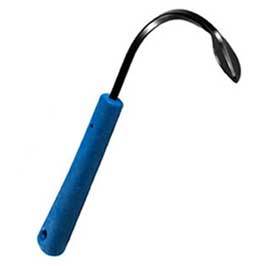 With a handle made from recycled plastic and a tough metal blade that doesn’t seem to rust (mine’s been outside for many years without rusting), the CobraHead weeder is made to last. Any way you use it, the curved blade on the CobraHead effortlessly digs into the soil. The weighted collar that holds the blade helps the blade sink into the soil quite naturally, whether you’re gouging roots of weeds or just loosening the soil. It’s great work working in-between plants and can easily pull out larger weeds with the rootball intact. It’s made in the USA, costs $24.95 and is also available in a long-handled version.
With a handle made from recycled plastic and a tough metal blade that doesn’t seem to rust (mine’s been outside for many years without rusting), the CobraHead weeder is made to last. Any way you use it, the curved blade on the CobraHead effortlessly digs into the soil. The weighted collar that holds the blade helps the blade sink into the soil quite naturally, whether you’re gouging roots of weeds or just loosening the soil. It’s great work working in-between plants and can easily pull out larger weeds with the rootball intact. It’s made in the USA, costs $24.95 and is also available in a long-handled version.
>> See the detailed review of the long-handled version here.
Long-Handled Weeding Tools
This is a category of tools in which you’ll find many gimmicky items that just don’t work. If you’ve ever seen an infomercial promising to “make weeding so much fun that even the kids will love it!” then you know what I’m talking about.
We’re still in the process of testing every weeding tool that looks like it might be worth purchasing and I’ll continue to update this article as more reviews are completed. In the meantime, here are the long-handled weeding tools that we highly recommend.
Joseph Bentley Dutch Hoe
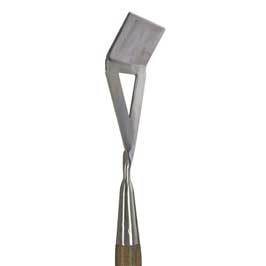 A Dutch hoe differs from the traditional American hoe you’re probably familiar with. It’s used by resting the lower end of the blade flat on the ground and gently sliding the hoe back-and-forth. The blade will slip under the surface of the soil to break it up and cut the weeds from their roots. By working backward from one end of a bed to the other with a push-pull action, hoeing becomes an easy task. The long handle and easy motion required of this hoe allows you to stand upright without bending over, saving your back as well as time. The Joseph Bentley Dutch hoe is a well-made tool, with a solid oak handle, stainless steel blade and lifetime guarantee.
A Dutch hoe differs from the traditional American hoe you’re probably familiar with. It’s used by resting the lower end of the blade flat on the ground and gently sliding the hoe back-and-forth. The blade will slip under the surface of the soil to break it up and cut the weeds from their roots. By working backward from one end of a bed to the other with a push-pull action, hoeing becomes an easy task. The long handle and easy motion required of this hoe allows you to stand upright without bending over, saving your back as well as time. The Joseph Bentley Dutch hoe is a well-made tool, with a solid oak handle, stainless steel blade and lifetime guarantee.
>> READ THE FULL REVIEW
Radius PRO Weeder
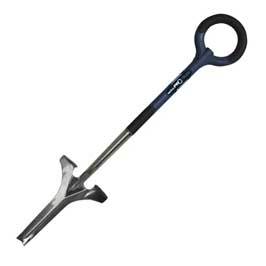 This ergonomic weeder has a circular, resin-coated handle that’s perfect for those of us with arthritic fingers, grip strength issues, carpal tunnel or any other hand/wrist problems. The long, stainless steel blade easily slides into the ground when you step on the foot rest. It’s particularly good at uprooting taprooted weeds – say goodbye to dandelions and dock! It’s made of resin-encased steel and has a lifetime guarantee. Note that it weighs in at 4.5lbs so it’s a little on the heavy side.
This ergonomic weeder has a circular, resin-coated handle that’s perfect for those of us with arthritic fingers, grip strength issues, carpal tunnel or any other hand/wrist problems. The long, stainless steel blade easily slides into the ground when you step on the foot rest. It’s particularly good at uprooting taprooted weeds – say goodbye to dandelions and dock! It’s made of resin-encased steel and has a lifetime guarantee. Note that it weighs in at 4.5lbs so it’s a little on the heavy side.
>> READ THE FULL REVIEW
Weed Dragon Garden Torch
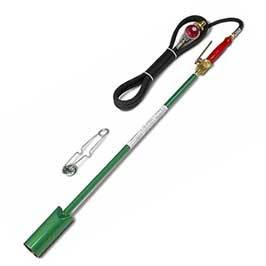 OK, maybe this doesn’t exactly fall into the “long-handled” weeding tools category, but it sure gets the job done and you don’t have to bend over to do it. The Weed Dragon emits a flame that’s used to “cook” weeds, destroying their ability take up water and nutrients; eventually, they die. While it doesn’t kill weeds immediately (some weeds can take several days to die), it’s highly effective and requires very little effort. Just be sure to have someone standing by with a garden hose in case you flame the wrong thing or something catches on fire (that’s a rare occurrence, but it’s better to be safe than sorry).
OK, maybe this doesn’t exactly fall into the “long-handled” weeding tools category, but it sure gets the job done and you don’t have to bend over to do it. The Weed Dragon emits a flame that’s used to “cook” weeds, destroying their ability take up water and nutrients; eventually, they die. While it doesn’t kill weeds immediately (some weeds can take several days to die), it’s highly effective and requires very little effort. Just be sure to have someone standing by with a garden hose in case you flame the wrong thing or something catches on fire (that’s a rare occurrence, but it’s better to be safe than sorry).
>> READ THE FULL REVIEW
And now over to you – What’s your favorite weeding tool? Why? Share your thoughts in the comments below!
And if you liked this reivew, please sign up for our monthly newsletter with reviews, special offers and giveaways.
Yes, I want reviews & special offers!
Please note that the Amazon links above (and only the Amazon links) are affiliate links. Should you choose to purchase through these links, GPR will make a small commission (at no extra cost to you) that helps to support this website and our gardening product reviews.
SOURCE:http://gardeningproductsreview.com/best-weeding-tools/